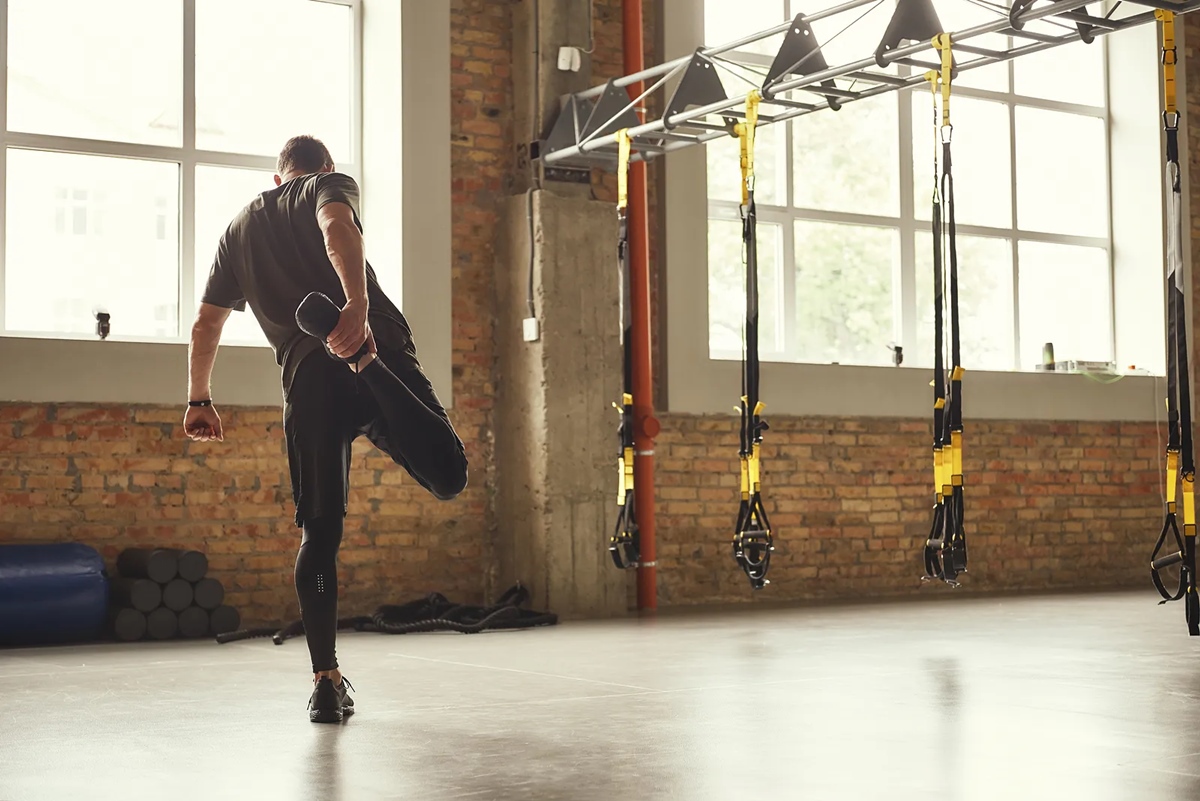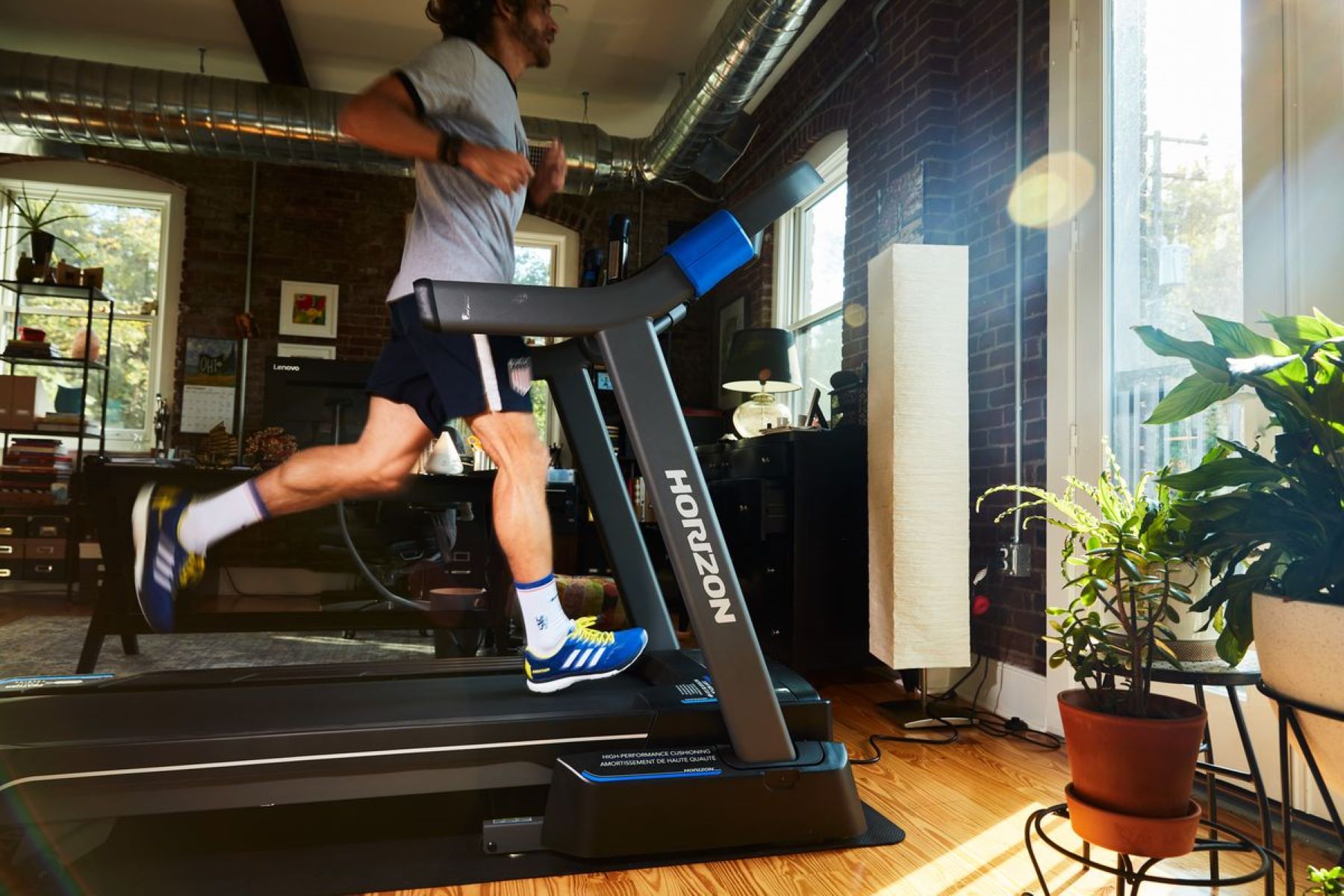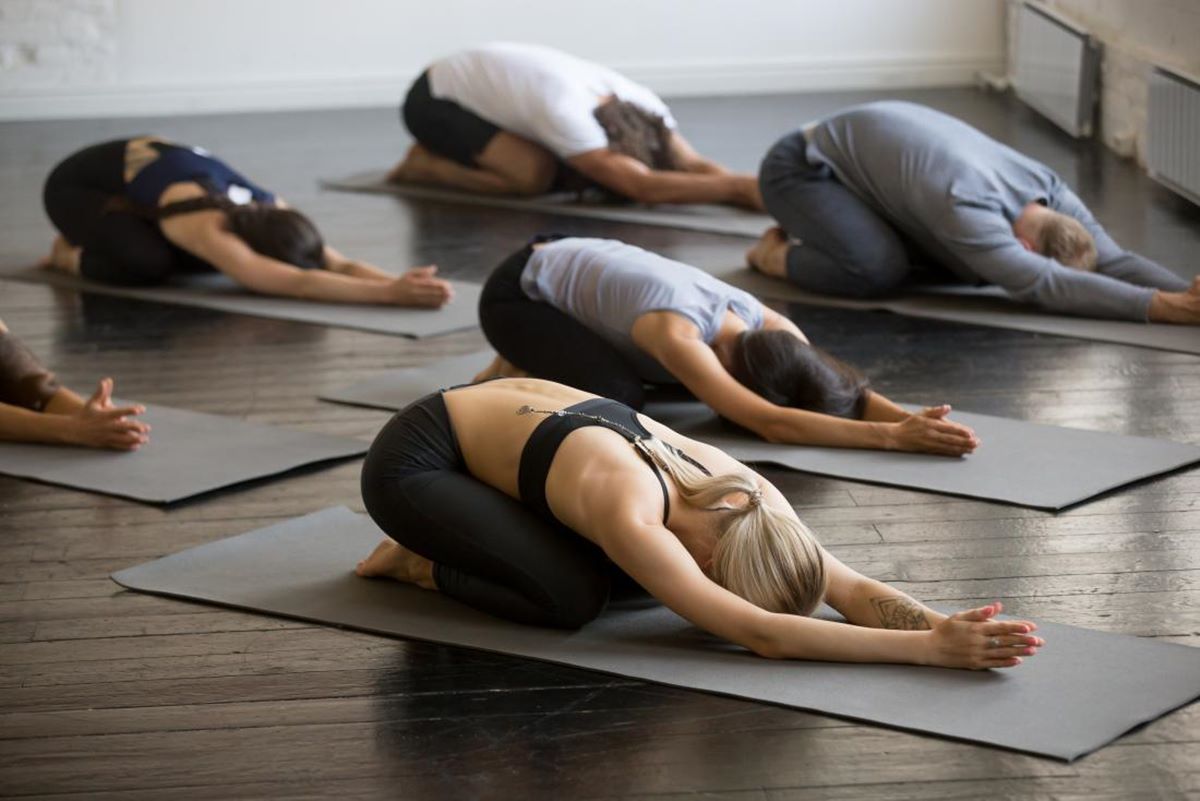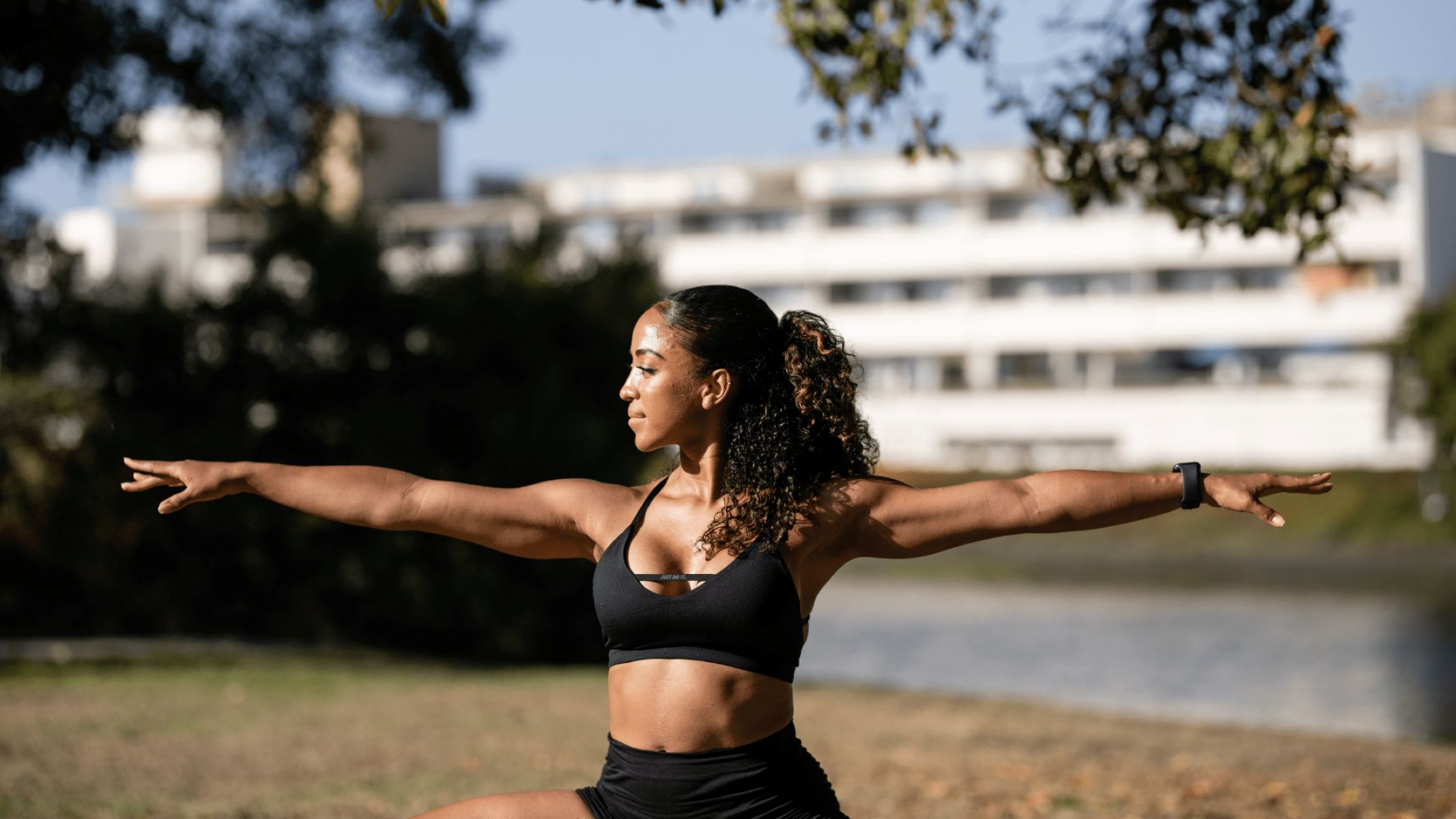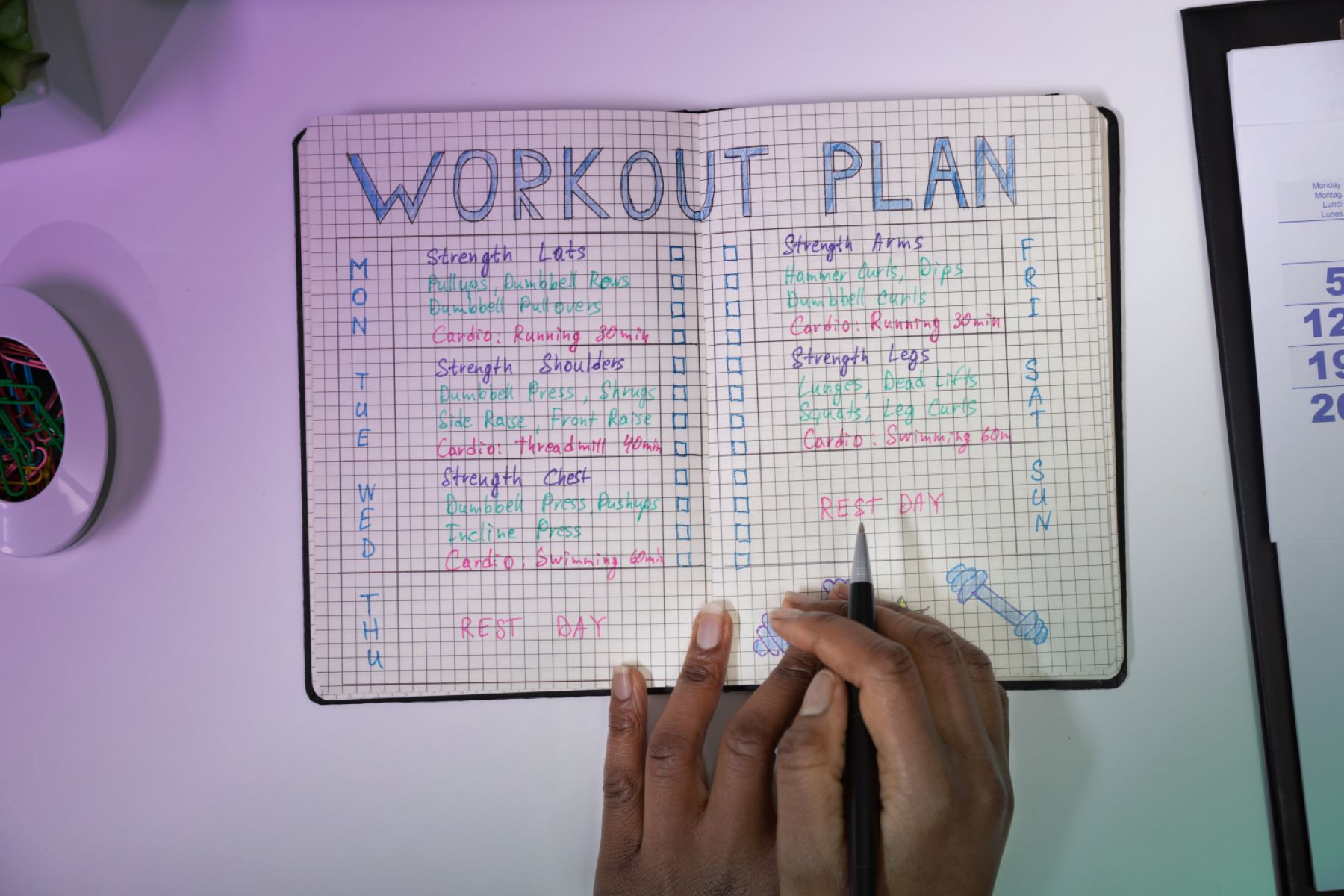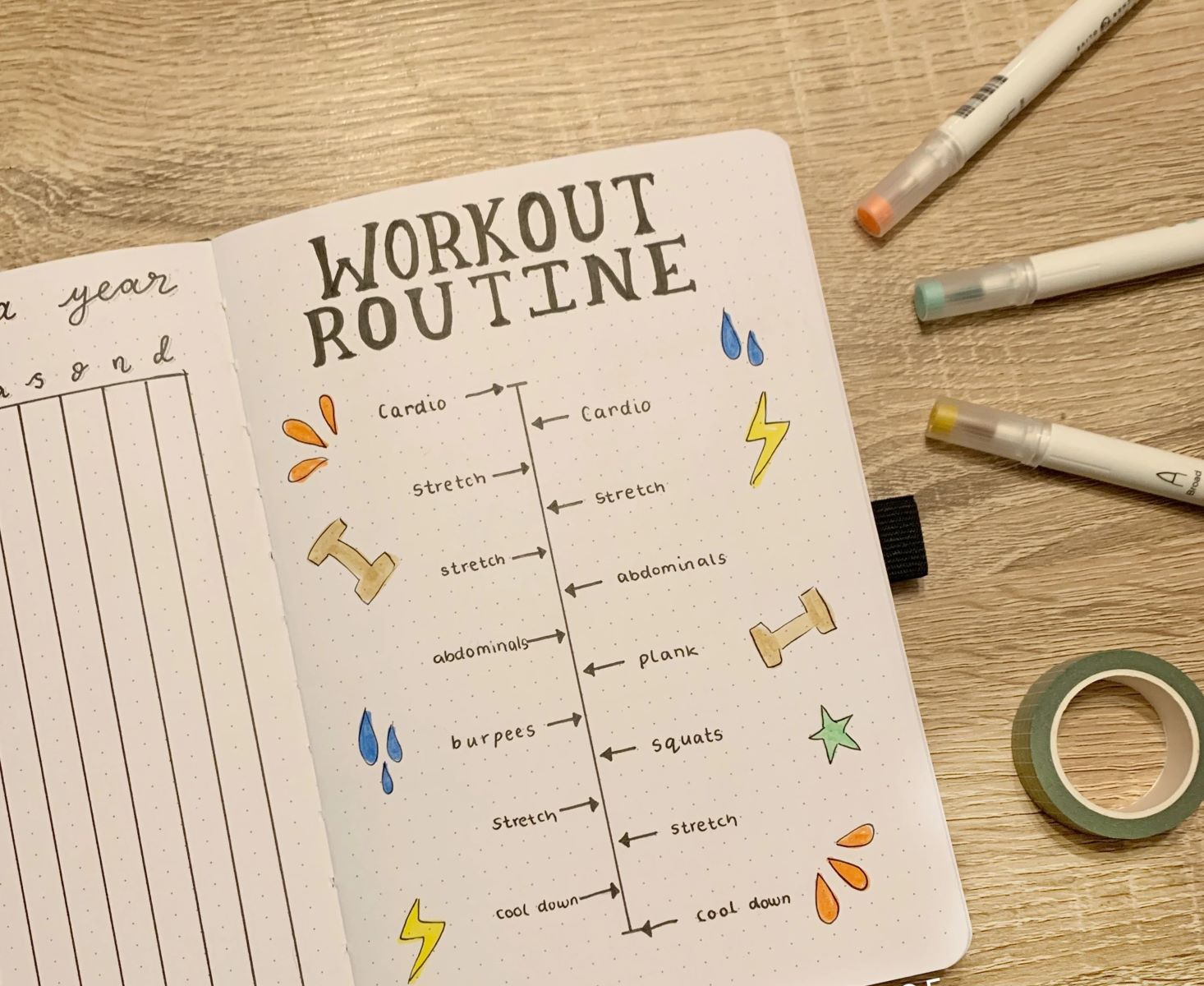

Featured
How To Make Workout Routine
Modified: January 2, 2024
Discover the best way to create a featured workout routine with expert tips and strategies. Transform your fitness journey with our comprehensive guide!
Introduction
Welcome to the world of fitness and wellness! Whether you’re a beginner or someone who wants to revamp their workout routine, this article is here to guide you. A well-structured and effective workout routine is essential for achieving your fitness goals and maintaining a healthy lifestyle. It not only helps you build strength and endurance, but also improves your mental well-being.
Creating a workout routine may seem overwhelming at first, but with the right approach and a little bit of planning, you can design a personalized program that suits your needs and preferences. This article will take you through the step-by-step process of creating an effective workout routine that will keep you motivated and help you see results.
In this article, we will cover important aspects such as setting goals, determining your fitness level, choosing the right exercises, creating a schedule, warm-up and cool-down routines, monitoring your progress, and staying motivated throughout your fitness journey.
No matter what your goals are – whether it’s losing weight, gaining muscle, improving flexibility, or simply staying active – having a well-structured workout routine is the key to success. So, let’s dive in and start building your personalized workout routine!
Step 1: Set Your Goals
Before you start creating your workout routine, it’s important to establish your goals. What do you want to achieve through your workouts? Do you want to lose weight, build muscle, increase flexibility, or improve overall fitness?
Setting specific and realistic goals will give you direction and motivation. Be clear about what you want to accomplish and set both short-term and long-term goals. For example, a short-term goal could be running a 5K race within three months, while a long-term goal could be losing 20 pounds in six months.
Keep in mind that your goals should be SMART – specific, measurable, achievable, relevant, and time-bound. Setting SMART goals will help you stay focused and track your progress effectively.
It’s also important to consider your personal preferences and interests when setting your fitness goals. Do you enjoy cardio exercises like running or cycling? Or do you prefer strength training exercises with weights? Choosing activities that you enjoy will make it easier to stick to your workout routine in the long run.
In addition to your physical goals, consider any other aspects you’d like to address in your workout routine. Maybe you want to reduce stress, improve sleep quality, or boost your energy levels. These holistic goals will help you create a well-rounded workout plan that benefits your overall well-being.
Remember, goal-setting is a continuous process. As you progress and achieve your initial goals, you can always set new ones to keep challenging yourself and staying motivated. Regularly evaluating and adjusting your goals will ensure that your workout routine stays relevant and continues to give you the desired results.
Step 2: Determine Your Fitness Level
Before diving into any workout routine, it’s important to assess your current fitness level. Understanding where you’re starting from will help you tailor your workouts and track your progress more effectively.
There are several ways to determine your fitness level. One simple method is to evaluate your endurance and cardiovascular fitness. You can do this by performing a basic cardio exercise, such as walking or jogging, and measuring your heart rate and how long you can sustain the activity without getting overly fatigued.
Another way to assess your fitness level is by measuring your strength. You can perform simple bodyweight exercises like push-ups, squats, or planks to gauge your upper body, lower body, and core strength. Take note of the number of repetitions you can do before reaching fatigue.
Flexibility is also an important component of fitness. Assess your flexibility by performing stretches and observing your range of motion. Can you touch your toes without bending your knees? Are you able to reach your arms behind your back without discomfort? These are indicators of your current flexibility level.
Additionally, consider factors such as balance, coordination, and body composition. These elements play a role in your overall fitness and can be evaluated through different exercises and measurements specific to each area.
Once you have assessed your fitness level, be honest with yourself about your strengths and weaknesses. This will help you identify areas where you need to focus more attention and areas where you can push yourself to new levels. Remember, everyone has a unique starting point, and fitness is a journey. Embrace where you’re starting from and use it as a benchmark to monitor your progress as you move forward.
Periodically re-evaluate your fitness level as you progress in your workout routine. As you become fitter and stronger, your capabilities and limitations will change. Regularly assessing your fitness level will enable you to adjust and adapt your workouts accordingly, ensuring continuous improvement.
Step 3: Choose the Right Exercises
Now that you have set your goals and determined your fitness level, it’s time to choose the exercises that will help you achieve those goals. The key is to select a variety of exercises that target different muscle groups and meet your specific fitness objectives. Here are some factors to consider when choosing the right exercises for your workout routine:
1. Fitness Goals: Take into account your goals and what you want to achieve. For example, if you want to build strength, include exercises that focus on resistance training, such as weightlifting or using resistance bands. If your goal is to improve cardiovascular endurance, incorporate exercises such as running, cycling, or swimming.
2. Preferred Activities: Choose exercises that you enjoy doing. If you don’t enjoy a particular activity, you’re less likely to stick with it in the long run. Consider activities like yoga, dance classes, or sports that you find enjoyable and engaging.
3. Equipment and Facilities: Assess the resources available to you, including the equipment you have access to and the facilities in your vicinity. If you have access to a gym, you can take advantage of weightlifting machines or various cardio equipment. If you prefer working out at home, consider bodyweight exercises or investing in some basic equipment like dumbbells or resistance bands.
4. Time Availability: Evaluate the amount of time you can dedicate to your workout routine. If you have a limited amount of time, choose exercises that provide a high-intensity workout in a short period, such as interval training or circuit training. If you have more time available, you can incorporate longer cardio sessions or split your workouts into separate strength and cardio days.
5. Balance and Variation: Aim for a balanced workout routine that targets all major muscle groups and includes a mix of cardiovascular exercises, strength training, and flexibility training. This will help you improve overall fitness and prevent muscle imbalances or overuse injuries. Incorporate different exercises and variations to keep your routine interesting and challenging.
Remember to start with exercises that match your current fitness level and gradually progress to more challenging ones as you get stronger and fitter. It’s always a good idea to consult with a fitness professional or personal trainer who can provide guidance and ensure you are performing exercises with proper form and technique.
By choosing the right exercises, you will be able to design a workout routine that is effective, enjoyable, and tailored to your specific goals and needs.
Step 4: Create a Schedule
Creating a schedule for your workout routine is crucial for consistency and progress. It not only helps you stay organized but also ensures that you allocate the necessary time for exercise. Here are some tips to help you create an effective schedule:
1. Determine Frequency: Decide how many days per week you want to work out. This will depend on your fitness goals, time availability, and recovery needs. Aim for a minimum of three to four days of exercise per week to see significant improvements.
2. Time of Day: Identify the best time of day for your workouts. Some people prefer to exercise in the morning to kickstart their day, while others find evening workouts more energizing. Find a time that aligns with your schedule and allows you to consistently stick to your routine.
3. Duration of Workouts: Consider the length of your workouts. It’s important to have a balance between intensity and duration. Shorter, high-intensity workouts can be effective, while longer sessions may be necessary for endurance or specific training goals. Aim for at least 30 minutes of moderate-intensity exercise per session.
4. Splitting Workouts: If time is limited, consider splitting your workouts into shorter sessions throughout the day. For example, you can do 20 minutes of strength training in the mornings and 20 minutes of cardio in the evenings. This allows you to get the benefits of exercise while accommodating a busy schedule.
5. Rest and Recovery: Allocate rest days in your schedule to allow your body to recover and avoid overtraining. Rest days are essential for muscle repair, injury prevention, and overall well-being. You can use these days for active recovery, such as gentle stretching or low-impact activities like yoga.
6. Flexibility and Adaptability: Life can sometimes throw unexpected events or obligations at us. Be prepared to adjust your schedule when necessary. It’s okay to be flexible and swap workout days or modify your routine as needed. The important thing is to stay consistent and committed to your overall fitness goals.
7. Keep a Workout Journal: Consider keeping a workout journal or using a fitness tracking app to record your workouts and track your progress. This can help you stay motivated, track your achievements, and identify areas for improvement.
Remember to listen to your body and adapt your schedule accordingly. If you’re feeling fatigued or experiencing any discomfort, it’s important to prioritize rest and recovery. Don’t be afraid to seek guidance from a fitness professional to help you create a schedule that suits your needs and maximizes your results.
By creating a schedule and sticking to it, you will establish a routine that becomes a natural part of your daily life. This consistency will help you make significant progress towards your fitness goals and lead to long-term success.
Step 5: Warm Up and Cool Down
Many people underestimate the importance of warming up and cooling down before and after their workouts. However, these pre and post-workout routines are essential for injury prevention, improved performance, and overall recovery. Here’s why you should incorporate warm-up and cool-down exercises into your workout routine:
1. Warm Up: Before starting any intense physical activity, it’s crucial to warm up your muscles and prepare your body for the upcoming workout. A proper warm-up gradually increases your heart rate, circulation, and body temperature. It helps loosen up your muscles, lubricates your joints, and improves your range of motion. A warm-up typically includes dynamic stretches, light cardio exercises, or mobility drills specific to the muscles and joints you’ll be using during your workout.
2. Benefits of Warm-up: A well-executed warm-up not only enhances your physical performance but also reduces the risk of injury. It allows your body to reach peak performance by optimizing blood flow to the muscles, enhancing muscle coordination, and improving neuromuscular activation. Additionally, warming up prepares you mentally for the workout ahead, helping you focus and engage in the exercises more effectively.
3. Cool Down: After completing your workout, it’s important to gradually bring your heart rate and breathing back to normal and provide your muscles with a chance to recover. Cool-down exercises help facilitate this recovery process. They involve performing low-intensity activities, such as walking or stretching, to gradually decrease your heart rate and relax your muscles. Cooling down also helps remove waste products, such as lactic acid, from your muscles, reducing post-workout soreness and stiffness.
4. Benefits of Cool-down: Incorporating a proper cool-down into your routine can help minimize post-workout muscle soreness and promote faster recovery. It allows your body to gradually transition from high-intensity exercise to a resting state, reducing the likelihood of dizziness or light-headedness. Additionally, a cool-down promotes better blood circulation, which aids in the removal of metabolic waste and enhances the delivery of oxygen and nutrients to the muscles, facilitating the recovery process.
Make sure to allocate time for both your warm-up and cool-down in your workout schedule. Aim for at least 5-10 minutes of warm-up exercises before your workout and 5-10 minutes of cool-down exercises afterward. Tailor your warm-up and cool-down routines to the specific exercises you’ll be performing and pay attention to areas of the body that require extra attention or tend to be tighter or more prone to injury.
By incorporating warm-up and cool-down exercises into your workout routine, you’ll optimize your performance, reduce the risk of injuries, and enhance your overall recovery. These essential components will contribute to a more effective and enjoyable exercise experience.
Step 6: Monitor Your Progress
Monitoring your progress is a crucial step in any workout routine. It allows you to track your achievements, assess your improvements, and make necessary adjustments to your training plan. Here are some strategies to effectively monitor your progress:
1. Keep a Fitness Journal: Recording your workouts, including the exercises, sets, reps, and weights used, in a fitness journal can provide valuable insight into your progress. This will help you track your strength gains, endurance improvements, and overall performance over time. Additionally, you can note any changes in your body composition, such as weight loss or muscle gain.
2. Track Your Measurements: Along with keeping a fitness journal, it’s beneficial to take regular measurements of your body. These can include measurements of your waist, hips, arms, and thighs. By tracking these measurements, you can observe changes in your body composition and see progress that may not be reflected solely by the number on the scale.
3. Assess Your Fitness Metrics: Periodically test your fitness metrics to evaluate your progress. This could include measuring your cardiovascular endurance through a timed run or a fitness test like the beep test. You can also assess your strength by testing your maximum lifting ability for specific exercises. These assessments provide concrete data points to help gauge your progress and set new goals.
4. Use Technology: Utilize fitness apps, wearable devices, or online platforms that provide features for tracking your workouts, setting goals, and recording your progress. These tools can offer a more detailed analysis of your training data, such as heart rate, distance covered, calories burned, and even sleep quality. They can also provide visualization of your progress through charts and graphs.
5. Regularly Reevaluate Your Goals: As you continue to make progress, revisit your initial goals and assess if they need to be adjusted. S.M.A.R.T. (Specific, Measurable, Achievable, Relevant, Time-bound) goals are effective for setting targets. By reassessing your goals, you can ensure they remain challenging yet attainable. Adjusting your goals helps keep you motivated and focused on continuous growth.
6. Listen to Your Body: Pay close attention to how your body feels during and after workouts. Notice changes in your energy levels, strength, and overall well-being. If you consistently feel fatigued, experience pain, or notice a lack of progress, it may be a sign to reassess your routine or seek professional advice.
Monitoring your progress not only allows you to measure your success but also provides motivation and accountability. By tracking your improvements, you can celebrate milestones and identify areas where you need to put in additional effort. Remember, progress may not always be linear, but with consistent tracking and adjustments, you’ll stay on the path toward achieving your fitness goals.
Step 7: Stay Motivated
Staying motivated is key to maintaining a consistent workout routine and achieving your fitness goals. Here are some strategies to help you stay motivated throughout your fitness journey:
1. Set Realistic and Achievable Goals: Set goals that are realistic and attainable. Break them down into smaller milestones that are easier to achieve. Celebrate your accomplishments along the way, which will boost your motivation to keep going.
2. Find Your “Why”: Understand your reasons for wanting to be fit and healthy. It could be to improve your overall well-being, boost your confidence, or set a positive example for your loved ones. Knowing your “why” will help you stay focused and committed, especially during challenging times.
3. Mix Up Your Routine: Avoid monotony by incorporating variety into your workout routine. Try new exercises, change your training split, or explore different fitness classes. This keeps things exciting and prevents boredom.
4. Get an Accountability Partner: Find a workout buddy or join a fitness group to help you stay accountable. Share your goals and progress with them, and schedule workout sessions together. Having someone to support and motivate you can make a significant difference.
5. Track Your Progress: Continuously monitor and track your progress as discussed in Step 6. Seeing tangible results, whether it’s increased strength, improved endurance, or weight loss, can be highly motivating and reinforce your commitment.
6. Reward Yourself: Set up a reward system for achieving your fitness milestones. Treat yourself to something special, like a massage, a new workout outfit, or a day of relaxation. Having rewards to look forward to can provide that extrinsic motivation to stay on track.
7. Find Enjoyment in the Process: Choose activities that you genuinely enjoy. If you despise running on the treadmill, find other forms of cardiovascular exercise that you find fun and enjoyable, such as dancing, swimming, or playing a sport. When you enjoy what you’re doing, working out becomes something you look forward to rather than a chore.
8. Mix Up Your Environment: Change your workout environment from time to time. Try exercising outdoors, explore different parks or trails, or sign up for a fitness retreat. A change of scenery can invigorate your motivation and stimulate new excitement for your workouts.
9. Seek Inspiration: Surround yourself with sources of inspiration. Follow fitness influencers on social media, read fitness blogs or books, or listen to podcasts that motivate and educate you. Hearing success stories and learning new tips and tricks can reignite your enthusiasm.
10. Practice Self-Care: Take care of your mental and physical well-being beyond just your workouts. Prioritize sleep, practice stress management techniques, and fuel your body with nutritious foods. When you feel good inside and out, your motivation to maintain a healthy lifestyle naturally increases.
Remember, motivation may fluctuate, and it’s normal to have ups and downs. Stay compassionate with yourself during periods when motivation is low, and focus on rekindling the fire within. It’s all part of the journey towards achieving and sustaining a healthy, fit lifestyle.
Conclusion
Congratulations! You have now learned the step-by-step process of creating an effective workout routine. By setting your goals, determining your fitness level, choosing the right exercises, creating a schedule, incorporating warm-up and cool-down routines, monitoring your progress, and staying motivated, you are well on your way to achieving your fitness goals and maintaining a healthy lifestyle.
Remember, building a workout routine takes time and dedication. It’s important to listen to your body, be patient with yourself, and make adjustments as needed. Consistency is key. Embrace the journey, celebrate your achievements along the way, and enjoy the process of becoming your best self.
Keep in mind that fitness is a lifelong endeavor. As you progress, don’t be afraid to set new goals and challenge yourself further. Continuously assess your routine, seek new forms of exercise, and stay open to trying new activities.
Finally, remember that your workout routine should be tailored to your individual needs and preferences. What works for someone else may not work for you. Listen to your body, trust your instincts, and make modifications to suit your circumstances. Consult with a healthcare professional or fitness expert if you have any concerns or specific needs.
Now, armed with this knowledge and guidance, it’s time to embark on your fitness journey. Embrace the challenge, stay motivated, and enjoy the incredible benefits that a well-structured workout routine can bring to your life. Here’s to a healthier, stronger, and happier you!
